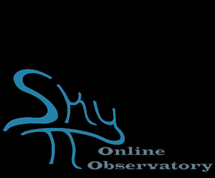Valentine’s Day Full Moon
- February 14, 2014
The moon turns full today – February 14, 2014 – on what we in the U.S. celebrate as Valentine’s Day. Do you celebrate it in your country? If so, happy V-Day! If not … we love you anyway. Today’s full moon is the second full moon after the December solstice. It reaches the crest of its full phase at 23:53 Universal Time. That’s 6:53 p.m. EST, 5:53 p.m. CST, 4:53 p.m. MST or 3:53 p.m. PST. The bright star near the full moon is Regulus, the brightest star in the constellation Leo the Lion.
Want to impress your Valentine with some names for the February full moon? In North America, we often call this particular full moon the Wolf Moon, Snow Moon or Hunger Moon. We’ve also heard the name Ice Moon for this full moon.
But the February full moon can assume any number of different names. It was called the Snow-blinding Moon by the Micmac people in eastern Canada. This full moon was the Wind Moon to the San Ildefonso of the Southwest. And it was the Blackbear Moon to the Kutenai of the Northwest. The list could go on and on, as evidenced by Keith’s Moon Page.
Every full moon stands opposite – or nearly opposite – the sun. Try noticing how high above the horizon you see the moon tonight. Its distance above the horizon indicates approximately how far below the opposite horizon the sun is at that time.
Any time you see the moon near the horizon, it might have an orange or reddish color. The reason is Earth’s own atmosphere. The moon’s (or sun’s) light must pass through a greater thickness of atmosphere when rising or setting (that is, when it is near the horizon) than when overhead. Since the atmosphere scatters the bluish component of light, while allowing the redder light to travel straight through to our eyes, objects often appear redder than normal when near the horizon. So any moon, full or not, may look reddish when seen near the horizon.
This year, the full moon falls on February 14, Valentine’s Day. The phases of the moon recur on (or near) the same calendar dates every 19 years. So the full moon won’t come on Valentine’s Day again until February 14, 2033! After that, a Valentine’s Day full moon will occur on February 14, 2052, on February 14, 2071 and February 14, 2090!
Bottom line: Valentine’s moon! The moon is full on Valentine’s Day 2014. Some names for the February full moon. Also, watch tonight as the moon and star Regulus travel together across the sky tonight from dusk until dawn.
Earthsky.com

